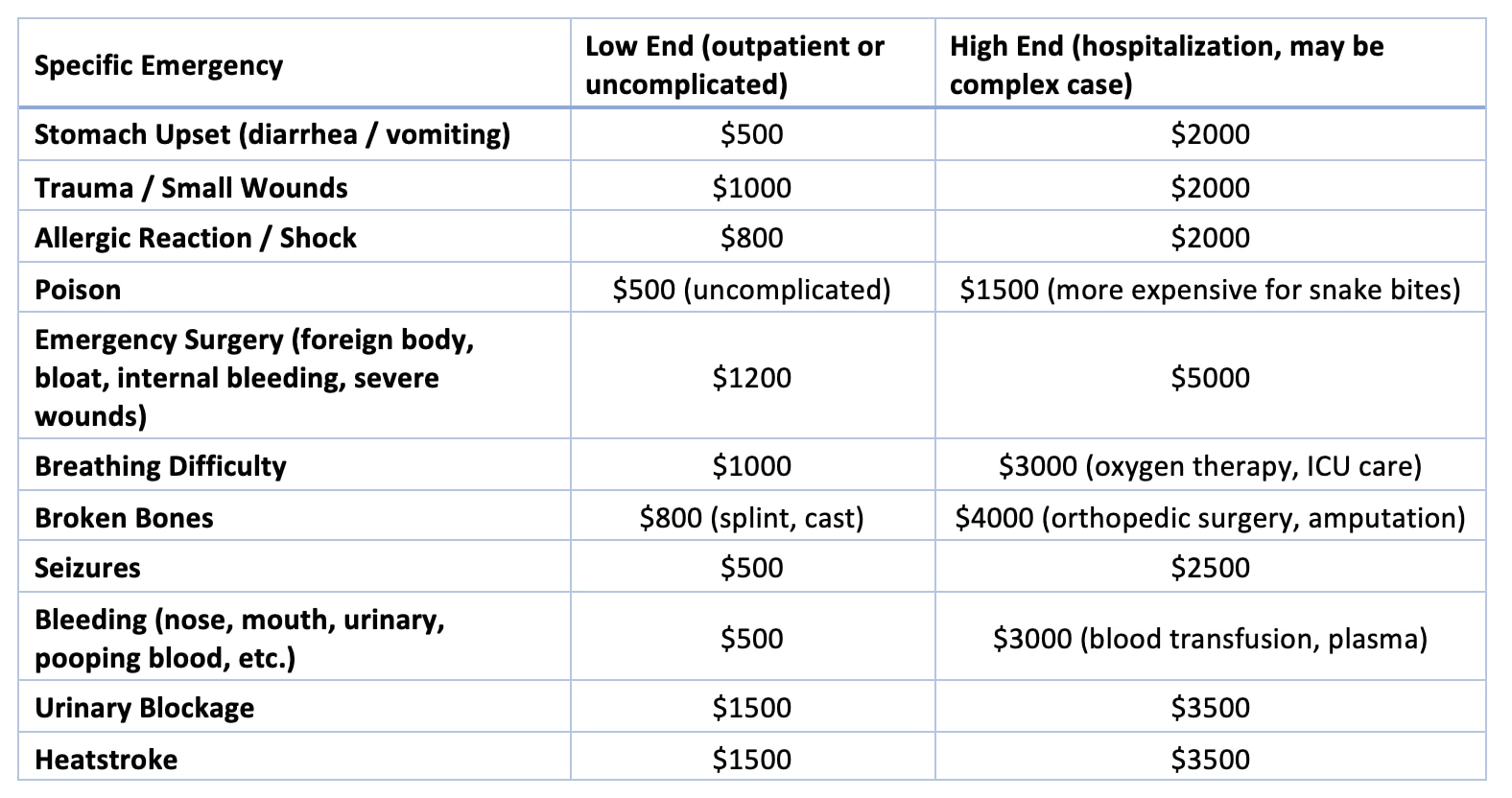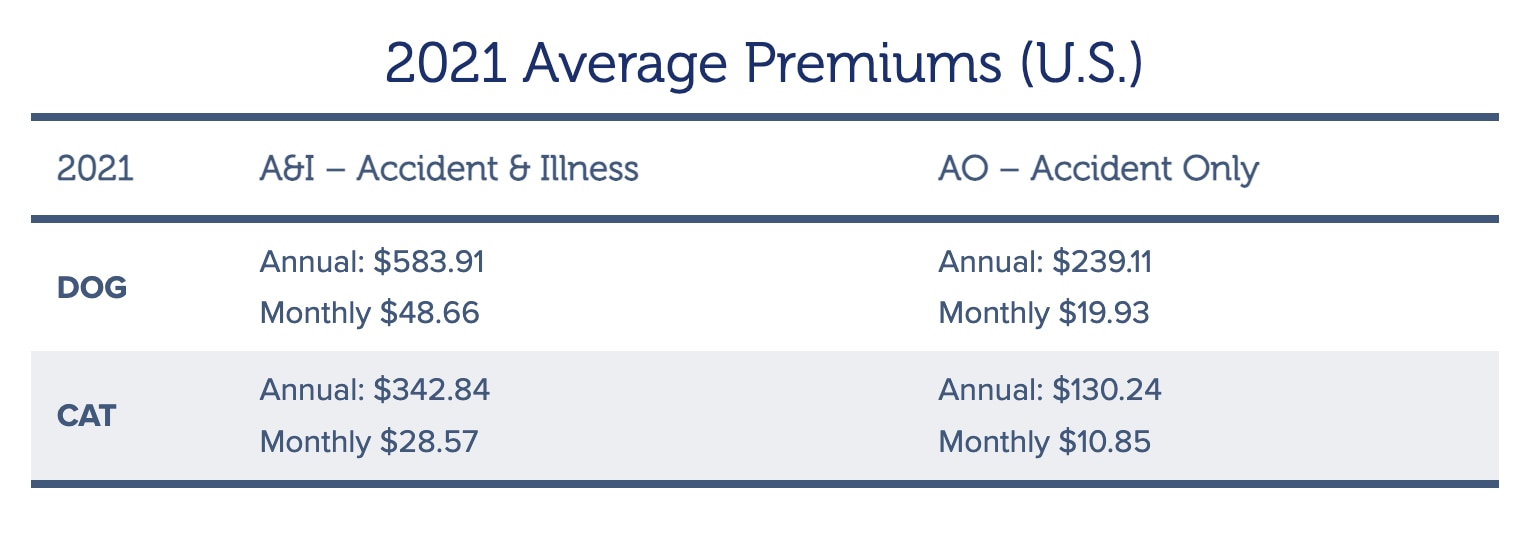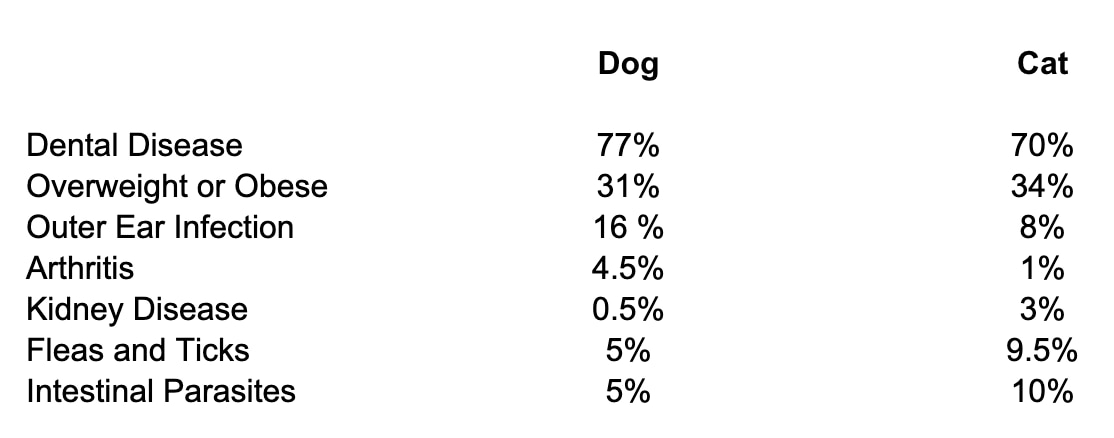If you’re considering getting pet insurance, you might first wonder if it’s “worth it,” especially if your pet is healthy and doesn’t go to the vet often.
But on the other hand, this is a choice that will affect your pet’s health. Before you decide, it’s always a good idea to look into the facts to see if it makes sense to get pet insurance.
Here is some information about how much emergency vet visits cost compared to the average cost of pet insurance plans. There is also some information about why you might want pet insurance at different stages of your pet’s life, as well as a few questions to help you decide.
Contents
The Price of Unexpected Vet Visits
Vet care is expensive, and if things keep going as they are, it will cost even more in the coming years.
No one wants to think about their pet getting sick or hurt, so we often don’t plan for the expensive vet bills that might come up. But planning is the best way to take care of your pet long-term and calm your worries about high vet bills.
According to the 2021-2022 APPA National Pet Owners Survey, pet owners in the United States spent about $109.6 billion on their pets in 2021. About 32.3 billion of that was spent on veterinary care and products.
Those are big numbers, but you may want more information. Care Credit has made a table showing how expensive urgent veterinary care can cost. Remember that this is only for the first year of treatment and that these numbers are from January 2017 to May 2020.
 All emergency visits will include an exam and tests, called diagnostics, and potentially an MRI or CT scan.
All emergency visits will include an exam and tests, called diagnostics, and potentially an MRI or CT scan.
- Exam: $100-$150
- Diagnostics: $400-$650 (bloodwork, urinalysis, x-ray; if ultrasound is included, could be up to $1000)
- MRI / CT scan: $1500-$3000 (includes anesthesia and care to perform imaging)
And then you will also pay different costs depending on your specific emergency. The following chart will give you an idea of what a “typical” visit to an emergency veterinarian might cost:

Based on these costs, it’s not surprising that 45% of dog owners and 38% of cat owners who responded to the Synchrony Lifetime of Care Study said they were not ready for pet-related costs.
Price of Pet Insurance
Considering these costs, let’s see how much pet insurance will cost. These are just the averages. The exact amount will depend on many things, like your pet’s age, breed, and health, where you live, and the policy details you choose.
According to the North American Pet Health Insurance Association, these are the average premiums in the United States for 2021:

Veterinary Care Costs vs. Pet Health Insurance
The Synchrony Study says that a dog’s health care costs range from $534 to $1285 per year. Health costs for cats cost between $374 and $965 per year.
When you look at the NAPHIA numbers, you can see that the average annual premiums for pet insurance are at or below the low end of the range for health-related costs for both dogs and cats.
So, if you only look at the numbers, is pet insurance worth it? Even though this comparison isn’t perfect (some health-related costs won’t be covered by insurance), it shows that pet insurance isn’t too expensive.
Read More: Look Out For the Best Vet in London, UK 2023 | Petcare Mag
Unless you’re lucky and your pet never gets sick or hurt, you’ll likely be glad you bought pet insurance.
The Benefits of Pet Insurance
One possible benefit of pet insurance is that it could help you save money in the long run. The fact that monthly premiums spread out the cost of care is also a big plus. And don’t forget how much better you’ll feel knowing you can take care of your pet if it gets hurt or sick.
How Frequently Will I Use My Pet Insurance?
Even though you don’t want your pet to get sick or hurt, it might help to know that they will probably have a health problem that needs a vet’s help at some point. Statistics from 2017 show how many dogs and cats were taken to their vet for different illnesses and problems.

Diabetes, heartworm disease, and allergies were all common enough for this report to cover them. Many things, like your pet’s age, breed, lifestyle, and the amount of preventive care they get, can affect what kind of illness or injury they might get, but you’ll likely have to take them to the vet at some point.
Is Pet Insurance Beneficial for My Pet?
Pet insurance can help your dog or cat in many ways, not just when it gets old.
Kittens and puppies: Young animals are likelier than older ones to get sick. Their immune systems aren’t fully grown yet, so getting them all of their shots takes time. Canine parvovirus and feline panleukopenia are infectious diseases that could kill pets and are most common in young or unvaccinated pets. Kittens and puppies also have a lot of trouble with parasites in their intestines.
Adult cats and dogs: Are usually at their healthiest in their prime. But there are still problems. For example, active dogs can get injuries like cranial cruciate ligament ruptures, and cats who have been gaining a little weight every year may now have diabetes mellitus. Also, when they are 3 years old, most pets have bad teeth.
Cats and dogs that are getting old: When pets reach their golden years, they show signs of long-term illnesses like arthritis. This is also the time when the chance of getting cancer is highest.
Purebred Cats and Dogs: Purebred cats and dogs are more likely to get diseases caused by their genes.
In certain cases–Look at how your pet lives and what kind of person he or she is. Your cat goes outside? Then it is likely that they will get hurt badly. Is your dog a dumpster diver? Then there’s a good chance you’ll have problems with your stomach.
What Pet Insurance Covers
To get the most for your money, you should choose an insurance plan that covers the most likely problems your pet will need care for. This will take some research. Different policies cover different things and leave out other things.
In general, pre-existing conditions are not covered, which is one benefit of buying a policy when your pet is young. Some genetic diseases could be left out of the list for breeds that are at risk.
Not surprisingly, plans that cost more tend to cover more, while plans that cost less tend to have more exclusions, higher deductibles, copays, or lower reimbursement rates and payment caps.
Most pet insurance policies cover the following:
- Surgery
- Diagnostic tests like bloodwork, x-rays, and ultrasounds
- Emergency care
- Hospitalization
- Treatment for illnesses (unless you purchase an accident-only policy)
- Prescription medications
Preventive care, like routine checkups and vaccines, is usually excluded, although add-on or stand-alone pet wellness policies are available.
FAQS
How do you know if pet insurance is right for you? Asking yourself the following questions can help:
- Can I pay for an unexpected veterinary emergency right now?
- Am I willing to euthanize my pet if I can’t afford treatment?
- Could I benefit from spreading out the cost of my pet’s care?
- Do I want the peace of mind that comes with knowing my pet can get the care they need?
If you answered no to the first two questions or yes to questions three or four, it’s time to consider purchasing pet insurance for your fuzzy family members.
